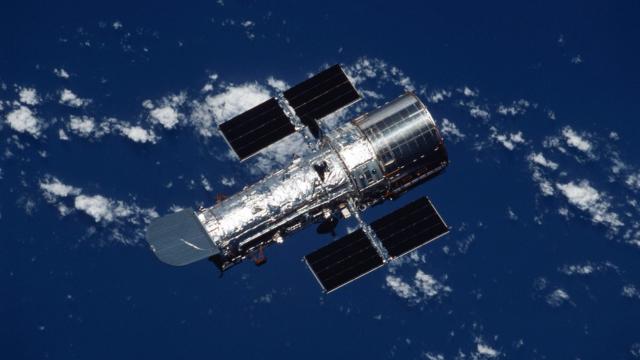Mission specialists continue to troubleshoot an issue with the Hubble Space Telescope that caused it to enter into a protective safe mode late last month.
Hubble automatically entered into safe mode on October 25 after a batch of synchronisation messages got lost. NASA says the space telescope is otherwise fine and that Hubble’s science instruments remain healthy, but normal science operations had to cease as a result of the anomaly. Without these synch messages, Hubble’s instruments can’t accurately respond to data requests and commands. That’s obviously not ideal for a precision instrument that orbits Earth at speeds approaching 27,359 km per hour.
Mission team members are in full-on troubleshooting mode, as they attempt to source the problem on hardware responsible for commanding Hubble’s instruments, according to a NASA update. In particular, they’ve got their eyes on the Control Unit circuitry, which churns out the synchronisation messages and communicates them to Hubble’s instruments.
Team specialists are also on the hunt for effective workarounds. They’ve floated the idea of altering instrument flight software such that it can compensate for the lost synch messages and in the process not have the telescope thrown back into safe mode. Any proposed workaround would be tested on ground simulators to make sure the idea actually works.
NASA has also been tinkering with Hubble to assist with the troubleshooting. On Monday, November 1, NASA turned on Hubble’s Near Infrared Camera and Multi Object Spectrometer (NICMOS) instrument. With NICMOS active, the team is able to gather more data, including a potential frequency measure of the glitch. NICMOS was no longer needed once Hubble’s Wide Field Camera 3 became available, and it’s been inactive for the past 11 years. With NICMOS now switched on, the team has a nonessential instrument to track lost messages — and not at the expense of having to put Hubble’s principal tools at risk. No synch messages have been lost since NICMOS was turned on, according to NASA.
Progress might happen soon, as Hubble’s Advanced Camera for Surveys (ACS) instrument could begin science observations early next week. NASA will make a decision about this on Sunday after a review of the most recent data. ACS was chosen as the first instrument to come back online because it’s least affected by lost synch messages, but NASA cautions that any lost synch messages between now and early next week could have a bearing on this decision. Specialists are “proceeding cautiously to ensure the safety of the instruments and avoid additional stresses on the hardware,” NASA said. “Therefore, only ACS will be used in this capacity next week.”
Regardless, analysis of the Control Unit will continue, as the team continues to source the cause of the anomaly. And as noted, they’ll continue to ruminate over those potential software changes. Only once the team understands the frequency of the glitch and develops a timeline for the software rollouts can NASA formulate a plan to return all other instruments to science operations.
If precedence means anything, we probably shouldn’t be worried. Hubble is the proverbial cat with nine lives, having returned from safe mode many times before, most recently this past March. All things being equal, Hubble should remain operational for the duration of the 2020s and perhps even into the 2030s.
